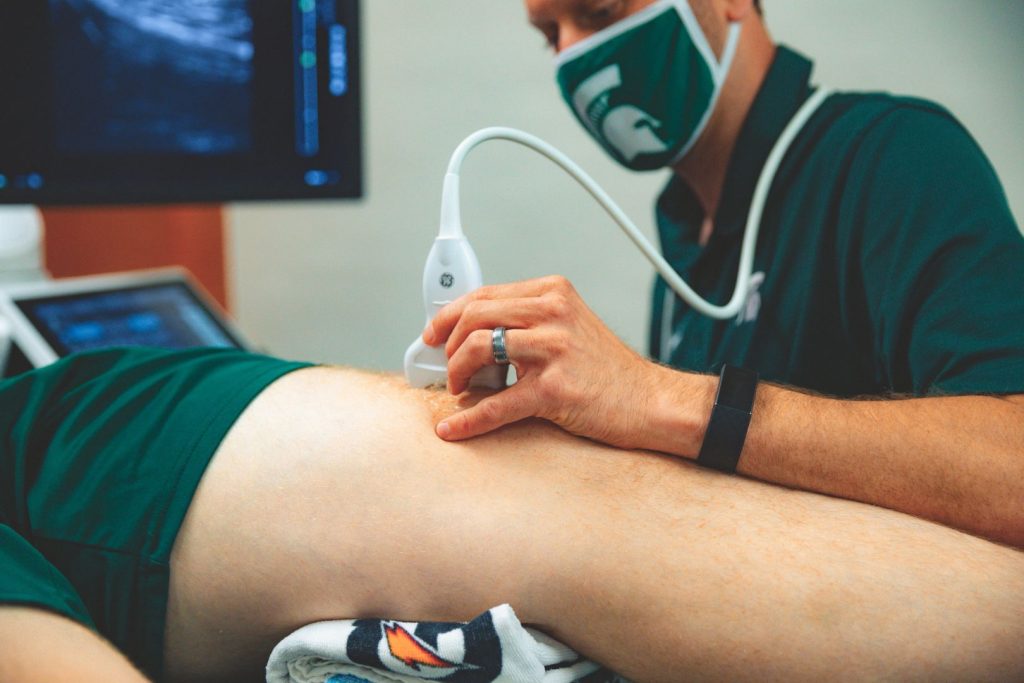By Marco Schimizzi

As the 2022 FIFA World Cup kicks off in Qatar on November 20, buzz is high for the world’s most popular athletic event, and a sport that is home to more than three billion fans according to FIFA. With over 250 million active soccer players, knee injuries—the most injured joint—are bound to occur.
Assistant Professor in the Department of Kinesiology Matt Harkey has spent close to eight years researching and working in the area of knee-related injuries.
Although his primary research focuses on developing ways to identify the patients after knee injury who are at the highest risk for knee arthritis, he shared some great tips for preventing and rehabilitating knee injuries for those involved in sport.
EXPAND YOUR EXERCISE ROUTINE
Harkey suggests creating an injury prevention program that includes an array of exercises that focus on plyometrics, flexibility, agility and balance to reduce the risk of knee injury. He recommends the Remain in the Game toolkit as resource for exercise ideas:
- Plyometrics – Squat jump and high skip. “Powerful movements not only help you build strength, but help you go through a motion quickly,” Harkey added.
- Flexibility – Calf stretch, quadricep stretch and hamstring
- Agility – Carioca and single-leg hop with cone
- Balance – single-leg balance alternating eye
PRACTICE THE MOTIONS
Much of Harkey’s research has focused on the fine mechanics of movement in the knee, which comes into play during the motion of landing. Whatever the sport may be, consistently practicing the routine motions will help reduce the risk of injury.
“Poor movers are at an increased risk of ligament tears when they land,” he said. “They’re putting their joints at increased risk for tear.”

Practicing routine motions results in improved reaction time. “If you don’t control your body well enough, you’re more likely to experience a non-contact injury.”
TRYING NEW SPORTS REDUCES STRESS ON MUSCLES AND MIND
Sports specialization is becoming increasingly prevalent, especially with adolescent youth, who suffer an estimated 2.5 million knee injuries each year—the most injured joint according to Academic Emergency Medicine.
Aside from the physical risk, a study published by Dan Gould, former director of the Institute for the Study of Youth Sports and professor emeritus, found that a “concerning number of young athletes involved in a single sport experience burnout and increased stress.”
“Sports specialization isn’t good for anyone. If you look at pro athletes, for the most part, the highest caliber athletes weren’t just playing a single sport when they were young,” mentioned Harkey, “It sounds counter-intuitive, but playing other sports places different stress on different parts of the body, which helps them become better overall athletes.”
Harkey also noted that sports specialization is a common cause of psychological burnout.
REST UP
Lastly, stay well rested. “Your body is going to tell you when you need rest,” Harkey finished. “Pushing through small injuries will result in a larger injury in the long run.”
For information on Matt Harkey’s research visit the Department of Kinesiology’s Sport Injury Research Laboratory website.